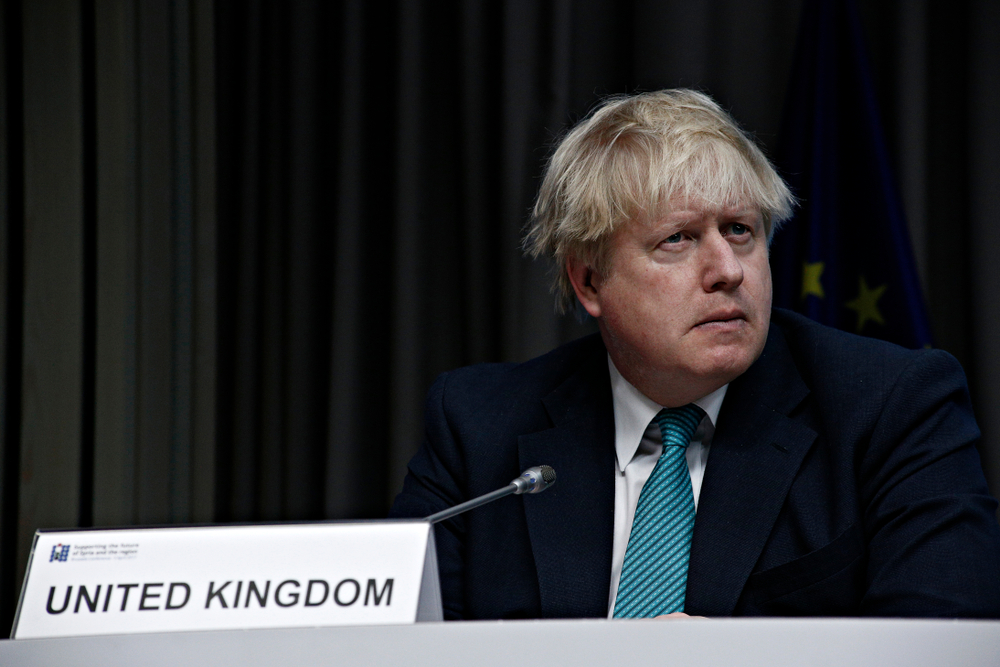Boris Johnson’s 2025 gigabit broadband vision in tatters, MPs claim
This is the second report within a month to conclude even 85% full-fibre coverage is unachievable


The government’s manifesto pledge to achieve universal full-fibre broadband coverage across the UK by 2025 is now unachievable, MPs have concluded.
A “litany” of shortcomings by the Department of Digital, Culture, Media and Sport (DCMS) means businesses in rural areas will not receive full-fibre broadband until many years after the rollout across urban regions, with packages likely to cost more too.
Among key failings include not tackling major barriers faced by operators, nor guaranteeing the necessary skills and expertise in local areas to ensure steady rollout, according to the Public Accounts Committee (PAC). This means that even the government’s revised target of 85% coverage by 2025 is no longer feasible.
“With the grim announcement that the country and economy will be locked down for months, the government’s promises on digital connectivity are more important than ever,” said PAC chair Meg Hillier MP. “But due to a litany of planning and implementation failures at DCMS, those promises are slipping farther and farther out of reach - even worse news for the “rural excluded” who face years trying to recover with substandard internet connectivity.
“Government cannot allow digital inequality to continue to compound and exacerbate the economic inequality that has been so harshly exposed in the COVID-19 pandemic. It needs to be clear about timelines in each area so that businesses and individuals can plan for their digital future.”
These findings represent the second major report published within the last few weeks to conclude the government’s 2025 vision is now in tatters. In December 2020, the DCMS select committee found there was “no genuine belief” within the industry that 2025 was a realistic target for 100% full-fibre coverage.
Boris Johnson originally outlined a vision for maximum full-fibre coverage by 2025 across the UK two years ago – reiterating this pledge in the 2019 Conservative Party election manifesto. The target was always seen as ambitious, bordering on the unrealistic, however, with analysts suggesting there were too many hurdles to overcome.
Sign up today and you will receive a free copy of our Future Focus 2025 report - the leading guidance on AI, cybersecurity and other IT challenges as per 700+ senior executives
After recent scrutiny, the government dropped its target for maximum coverage by 2025 in favour of a target for 85% coverage instead. Both select committees now believe this second target is also unrealistic.
The DCMS committee report even concluded it was unacceptable for the government to abandon its 2025 target, only for it to then fail a much less ambitious target due to insufficient planning or investment.
Specifically, the DCMS has been criticised for only committing 25% of the £5 billion needed to ensure full-fibre rollout to the hardest to reach areas in the UK. These amount to 31 million premises.
While the PAC report focused exclusively on the state of full-fibre broadband rollout, the DCMS committee also compared this to the government’s targets for 5G rollout. Its report found the 2027 target for nationwide 5G rollout was “equally ambitious” and could be threatened by rulings banning the use of equipment by high-risk vendors, such as Huawei.
The government was also criticised for shifting its 5G delivery targets from the majority of the UK geographically to the majority population centres. In doing so, the DCMS committee claimed the government risked repeating the same mistakes made during 4G rollout, where investors cherry-picked areas of high population and left rural areas without adequate coverage for years.
“There’s clearly a lot of work to be done if the Government is going to reach its already scaled back targets,” said CEO of Zen Internet, Paul Stobart. “The increasing importance of connectivity can’t be underestimated. It is vital to unlocking productivity and performance across the country and is the basis for the new post-COVID era of flexible working.
“The industry is committed to making full-fibre a success. But in order to ensure targets are met and that those without sufficient connectivity, particularly in rural areas, have the speed and reliability they need, we need even greater collaboration between Government and the broadband industry, to include the infrastructure players, the carriers and the service providers. Each of these has a role to play in making this once in a generation infrastructure programme a success.”
Catherine Colloms, MD for corporate affairs with Openreach, added that nationwide coverage by 2025 was always going to be ambitious, but it's important to be ambitious given how critical broadband is to the UK, especially during and following the pandemic.
"We’ve consistently championed the need for faster action on rural broadband upgrades, because we don’t want communities left behind and we know it will underpin the UK’s economic, social and environmental recovery," she said.
“We’re very keen to lean in and do our bit but, as the PAC report notes, there remain barriers preventing the industry from going faster – like business rates and access to property and land - so it’s vital that these are addressed by Government as a priority."

Keumars Afifi-Sabet is a writer and editor that specialises in public sector, cyber security, and cloud computing. He first joined ITPro as a staff writer in April 2018 and eventually became its Features Editor. Although a regular contributor to other tech sites in the past, these days you will find Keumars on LiveScience, where he runs its Technology section.
-
 EU lawmakers want to limit the use of ‘algorithmic management’ systems at work
EU lawmakers want to limit the use of ‘algorithmic management’ systems at workNews All workplace decisions should have human oversight and be transparent, fair, and safe, MEPs insist
-
 Pure DC’s announces 'Europe’s largest standalone hyperscale data center lease' in Amsterdam — but who is the mystery customer?
Pure DC’s announces 'Europe’s largest standalone hyperscale data center lease' in Amsterdam — but who is the mystery customer?News The company is now constructing a 78MW campus in Westpoort, Amsterdam